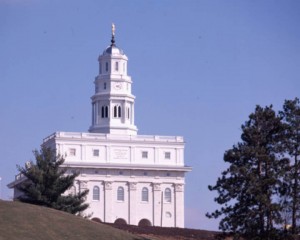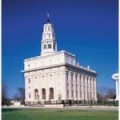As early as 1830, Joseph Smith received revelations alluding to the fact that God would require the young Mormon Church to build a temple. Even earlier, the Book of Mormon (which Joseph Smith had translated from the records of an ancient people who lived in the Americas) taught that God had commanded this people to build temples, just as God had commanded the ancient Israelites. This teaching alone, that God had commanded His people to build temples in places other than Jerusalem, was a radical departure from the standard teachings of Joseph Smith’s time.
would require the young Mormon Church to build a temple. Even earlier, the Book of Mormon (which Joseph Smith had translated from the records of an ancient people who lived in the Americas) taught that God had commanded this people to build temples, just as God had commanded the ancient Israelites. This teaching alone, that God had commanded His people to build temples in places other than Jerusalem, was a radical departure from the standard teachings of Joseph Smith’s time.
After the Mormon Church was established on April 6, 1830, the fledgling Mormon community faced intense persecution in upper New York. Meetings were raided, baptismal services were interrupted, and members were harassed and scattered. With the membership such a scattered condition, no temple could even be considered, since the Church’s survival was constantly threatened. In late 1830, at the time of the first revelations to the Prophet Joseph Smith about gathering the Mormons together into one place, the Lord also revealed that Jesus Christ would come suddenly to his temple (compare Doctrine and Covenants 37:1 and Doctrine and Covenants 36:8, both given in the winter of 1830/31). Joseph Smith later explained that the purpose of gathering was to erect temples. Early the next year, another revelation was received (Doctrine and Covenants 57:3), which commanded that a temple be built in Independence, Jackson County, Missouri. Due to persecution, this temple was never completed, but Mormons today still look forward to the time that it will be built. For some time, the Mormons attempted to settle in Jackson County and to establish their Zion there, and build its glorious temple, but that was not to be. Instead, the focus shifted to Ohio where, by 1835, nearly 2,000 Mormons were already established. There, they enjoyed some peace.
Twitter •


 Watch a video about the restoration of the gospel on lds.org
Watch a video about the restoration of the gospel on lds.org